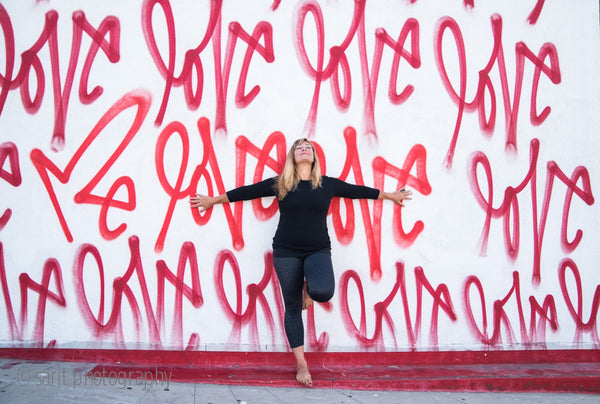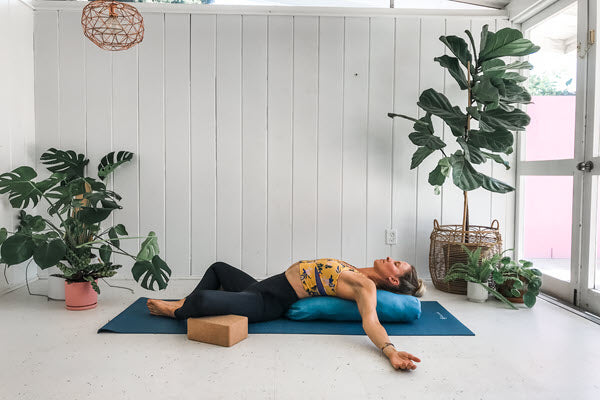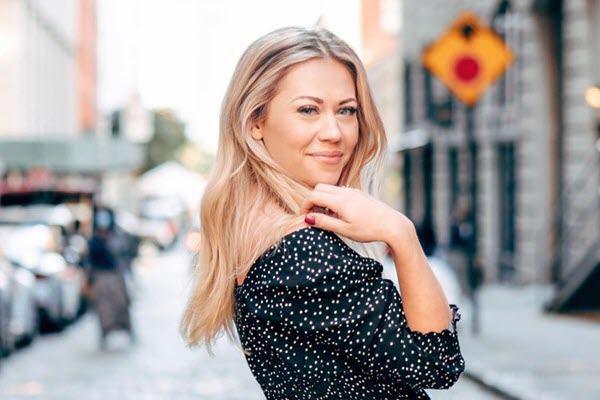New to Yoga? 8 Popular Yoga Styles Demystified

by: Laura Hobbs
You’re new to yoga and ready to take your first studio class. You browse the studio’s online schedule, but you’re confused by words like “vinyasa,” “Forrest,” and “yin.” How are you supposed to take a class if you don’t know what you’re signing up for?
Before your first studio class, ask yourself what it is you’re wanting from a yoga practice. A sweaty, bendy workout that leaves you feeling the after-yoga endorphin rush? Or a gentle, relaxing way to unwind your body and your mind? In the spirit of demystification, here are eight popular styles of yoga you’ll find in most any studio setting, explained.
Ashtanga
A yoga community classic. This popular style of yoga originated in Mysore, India, where Pattabhi Jois established his Ashtanga Yoga Research Institute in 1948. Focused on synchronizing the breath to movement, this physically demanding practice is divided into three increasingly complex series: primary, intermediate, and advanced, with fundamental sequences like sun salutations and finishing sequences sprinkled in.
Ashtanga can be summed up in one word: serious. Like, six-days-a-week, early-morning, no-music serious. Devotion and discipline are key to this practice, but the rewards are great—ashtanga practitioners tend to have superior muscle tone, incredible flexibility, and a body that will move effortlessly through all the twists and turns life brings. If you’re curious about this no-nonsense practice, a guided primary series class is your best bet.
Forrest
The goal of any sweaty, challenging Forrest class: release. Founded by yoga teacher and recovering addict Ana Forrest in 1982, Forrest yoga is designed to help you release tension and pain—both physical and emotional—through a series of challenging, dynamic sequences based on yogic teachings, indigenous ceremony, and emotional healing. Students are encouraged to feel deeply, explore movement, and even occasionally moan to release the buildup of life’s suffering. Be prepared to sweat and even possibly cry.
Hot Yoga and Bikram
First, a disclaimer: any devout Bikram addict will dismiss the claim that hot yoga and Bikram yoga are synonymous; they’re not. While very similar, Bikram holds a stricter set of rules regarding temperature regulation, pose cueing, and even studio carpet specifications. (Yeah, think about that one for a hot second. Eww.) These Bikram rules and regulations were established some 40 years ago, when Bikram Choudhury developed—and, much to the yoga community’s dismay, trademarked—his series of 26 static postures.
For simplicity’s sake, I’ll group the two styles together. Hot yoga and Bikram yoga practitioners move through a static series of 26 postures (give or take a few in a hot yoga class) in a hot and humid studio setting. How hot and humid, you ask? A typical class sits at about 105 degrees with a humidity level of 60 percent. The series is challenging, beginning with the more difficult standing postures and ending with a floor series. These poses are designed to build strength, hone balance, and increase flexibility, all while sweating a lot. Like, a whole lot. A mat towel is an absolute must, as is water, a sweat rag, and a prayer. Afterward, you’ll look—and feel—like you ran a marathon.
Kundalini
Don’t feel oxygenated enough? Kundalini will fix that. Focused on invigorating breathing exercises and repetitive, energetic movements called Kriya, kundalini yoga is all about topping up your body’s physical—and spiritual—energy supply. Based on the philosophical metaphor that the body’s energy is serpentinely coiled at the base of the spine, kundalini’s dynamic movements, breathing, and chanting are designed to “awaken the serpent,” increasing your mental and physical vitality. Expect to feel a tingly mix of energy and exhaustion after your first class.
Power Yoga/Power Vinyasa
Synonymous with the word “flow,” these high-intensity classes focus on moving from one pose to the next in a continuous motion. Power and vinyasa sequences are fluid and dynamic, and each teacher brings their own unique creative elements to the class, often weaving in an overarching theme and working toward a “peak pose.”
Poses can be challenging—think bodyweight-based lunges, squats, and pushup-style movements. Proper alignment is key in these classes, but is not fretted over. Students tend to know the basic poses and how to get into them, and teachers expect students to have this familiarity. If you’re unsure of your alignment skills, you may want to start with a slower, more alignment-based class. Here, expect to move, breathe, and most definitely sweat.
Yin and Restorative
Ready…set…relax. Set in a calm, quiet, often dimly lit studio, Yin and restorative yoga offer a gentle, slow-paced class, focusing on as few as ten poses in a 90-minute session. Both styles are suitable for all levels and offer a wealth of soothing mind-body benefits, but their aims and audiences are slightly different.
Yin yoga focuses on releasing the deeper connective tissues through static, supported poses held for minutes at a time. This motionless method works to quiet the mind in order to tap into the subtleties of the physical body. (Sound woo-woo? Stay with me.)
When you’re in a fast-paced vinyasa class, your mind is typically focused on just that: keeping up with the class’s quick-flowing pace and analyzing your alignment as you move. In a Yin class, your body is in a passive, static posture for somewhere between three and five minutes—long enough for your muscles and your mind to fully relax. When you slow down physically, your focus turns inward, allowing your mind the space to experience the feeling of the pose. How does your body react? Where do you feel it? What kind of emotion is associated with the physical sensation? This practice of self-study, in turn, creates a much keener sense of body awareness.
Restorative yoga is similar to Yin in that its slow, deliberate pace allows the mind to quiet, but restorative focuses on physical recovery from an ailment or injury. Often sought by recovering athletes, seniors, and post-op physical therapy patients, restorative classes aim to return the body to its normal, healthy, functioning state. Where Yin can have moments of intensity as the deeper connective tissues release, restorative is all about gentle healing and recovery. For both styles, expect a lot of props for support: blocks, straps, and blankets are the most common.
Regardless of your yoga goals, remember to keep an open mind and a curious spirit about the practice. Styles of yoga are as diverse as its practitioners; everyone comes to the mat for different reasons, and leaves a class with different takeaways. Especially as a beginner, it’s important to drop any tendencies toward comparison and self-judgment. (I know, easier said than done.) As your practice begins to solidify and evolve, you’ll become more aware of what you like, what you don’t, and what really makes your soul smile.
Also in Blog

Body Peace & Personal Empowerment

Yoga for Swimmers: Poses for Strength and Mobility

